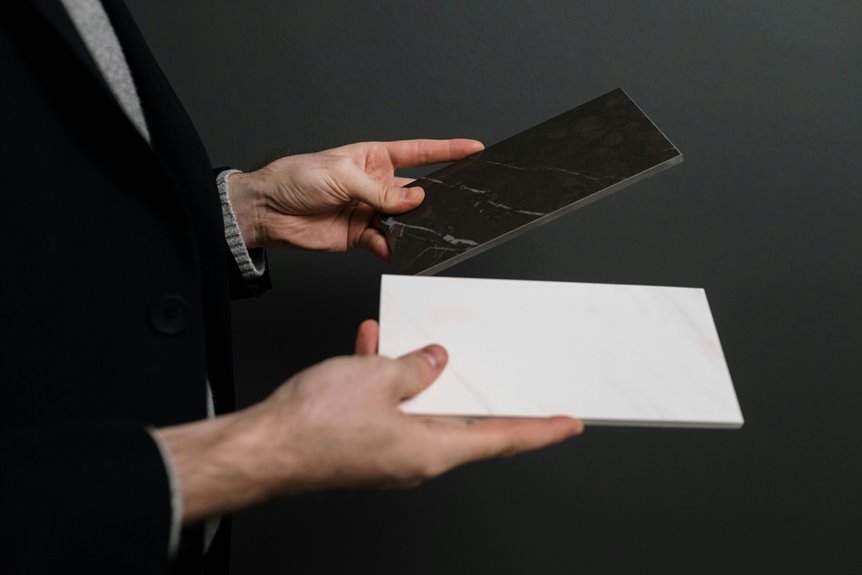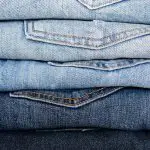When choosing between viscose and rayon, you might wonder which fabric keeps you cooler and more comfortable. Both are popular semi-synthetic fibers with similar origins, but their breathability can differ in subtle ways. Understanding these differences matters if you want clothing that feels light and airy in warm weather. Before you decide, it’s worth exploring how their structure and moisture management impact your comfort throughout the day.
Table of Contents
Key Takeaways
- Both viscose and rayon are breathable fabrics derived from natural cellulose fibers.
- Viscose is generally more porous, making it softer and enhancing its breathability.
- Rayon’s breathability varies significantly depending on fiber type and finishing methods.
- Viscose typically offers higher breathability due to its porous fiber structure.
- Breathability differences affect comfort, especially in warm and humid conditions.
Understanding the Origins and Manufacturing of Viscose and Rayon
Although viscose and rayon are often used interchangeably, understanding their origins and manufacturing processes can help you see why they share similarities yet differ in certain qualities.
Both fibers start with natural cellulose, usually extracted from wood pulp or cotton linters. However, the key difference lies in how this cellulose is chemically treated.
Rayon is a broad category of regenerated cellulose fibers, while viscose refers specifically to the method of dissolving cellulose in chemicals to create a viscous solution before spinning it into fibers.
These manufacturing processes influence the texture, strength, and feel of the final fabric. By grasping the fiber origins and the steps involved in their production, you’ll better appreciate why viscose and rayon fabrics perform differently despite their close relationship.
Comparing the Breathability of Viscose and Rayon Fabrics
Now that you know how viscose and rayon originate and are made, it’s easier to understand how these processes affect their breathability. When comparing breathability factors, both fabrics allow air flow well, but slight differences arise due to fiber structure and finishing methods. Viscose tends to be softer and more porous, enhancing breathability. Rayon, being a broader category, varies more depending on its specific type. Here’s a quick fabric comparison to clarify:
| Fabric Type | Breathability Level | Key Breathability Factors |
|---|---|---|
| Viscose | High | Porous fibers, soft texture |
| Rayon | Moderate to High | Fiber type, finishing process |
| Comparison | Viscose generally more breathable due to fiber porosity |
Understanding these factors helps you choose the right fabric for comfort and airflow.
Moisture Management and Comfort in Warm Weather
When you wear viscose or rayon in warm weather, how each fabric handles moisture greatly affects your comfort.
Both fabrics offer excellent moisture absorption, pulling sweat away from your skin to keep you feeling drier. This ability enhances your thermal comfort, helping you stay cool even on hot days.
However, viscose tends to absorb moisture a bit faster, which can make it feel more comfortable during intense heat. Rayon also manages moisture well but might take slightly longer to dry, which could affect how fresh you feel after prolonged wear.
Understanding these differences helps you pick the right fabric for staying comfortable in warm weather, ensuring you avoid that sticky, clammy feeling when temperatures rise.
Thermal Regulation and Seasonal Suitability of Both Fabrics
Because both viscose and rayon are breathable and moisture-wicking, they excel at regulating your body temperature across different seasons.
Viscose and rayon’s breathability and moisture-wicking keep you comfortable by regulating body temperature year-round.
This thermal comfort makes them versatile choices whether it’s warm or cool outside. You’ll find viscose offers a slightly better balance in thermal regulation, keeping you cool in summer while providing enough warmth layered in fall or spring.
Rayon also adapts well but can feel cooler against your skin, which might be ideal for hot climates but less cozy in chillier months.
Their seasonal adaptability means you can comfortably wear these fabrics year-round, especially when you layer appropriately.
Appearance and Texture Differences Between Viscose and Rayon
You’ll notice viscose has a shiny surface that catches light, giving it a silk-like softness.
Rayon, on the other hand, often feels more like cotton with a matte finish.
Understanding these differences helps you choose the right fabric for your style and comfort needs.
Shiny vs. Cotton-like
The look and feel of viscose and rayon can surprise you, as they often appear quite different despite their close relationship. Viscose typically boasts a shiny finish that reflects light beautifully, giving your clothing a more elegant look. Rayon, on the other hand, often mimics the soft, breathable cotton texture, making it feel familiar and comfortable.
| Feature | Viscose | Rayon |
|---|---|---|
| Appearance | Shiny finish | Matte, cotton-like |
| Texture | Smooth and silky | Soft and breathable |
| Common Use | Dressy garments | Casual wear |
| Visual Appeal | Luxurious shine | Natural and understated |
When choosing between them, consider if you want a glossy shine or a cozy cotton feel.
Silk-like Softness Comparison
While viscose and rayon differ in shine and texture, both fabrics share a remarkable silk-like softness that appeals to many. When you touch them, you’ll notice their softness levels closely mimic natural silk, making them comfortable against your skin.
The fabric drape of each adds to their appeal, flowing gracefully to enhance any garment’s look. However, viscose often feels slightly smoother, while rayon can have a bit more weight and structure.
Here’s what you can expect from their softness and drape:
- Viscose offers a silky, lightweight feel with excellent drape
- Rayon feels soft but may have a denser, more substantial texture
- Both fabrics provide breathable comfort similar to silk
- Their smooth surface reduces irritation, perfect for sensitive skin
You’ll find both ideal for stylish, soft, and breathable clothing.
Care Tips to Maintain Breathability and Fabric Quality
Because viscose and rayon fabrics are delicate and prone to damage, you should handle them with care to maintain their breathability and quality. Proper fabric care includes following specific washing instructions, using gentle drying techniques, and applying careful ironing tips. Avoid high heat and harsh chemicals to prevent weakening the fibers.
| Care Aspect | Recommendation |
|---|---|
| Washing | Hand wash or use a gentle cycle with cold water |
| Detergent | Use mild detergent without bleach |
| Drying | Lay flat or hang dry; avoid wringing |
| Ironing | Iron inside out on low heat while damp |
| Storage | Store in a cool, dry place away from sunlight |
Frequently Asked Questions
Can Viscose or Rayon Cause Allergies or Skin Irritation?
You might experience fabric sensitivity with viscose or rayon, which can cause skin reactions like itching or redness. If you have sensitive skin, you should test the fabric first and avoid prolonged contact to prevent irritation.
Are Viscose and Rayon Environmentally Sustainable Fabrics?
You shouldn’t assume viscose and rayon are fully eco friendly; their sustainable sourcing varies, and eco friendly production isn’t always assured. Always check brands’ transparency to guarantee they prioritize truly sustainable practices and minimize environmental impact.
How Do Viscose and Rayon Compare in Terms of Cost?
When it comes to cost comparison, you’ll find that viscose and rayon often go hand in hand, with slight price differences. Generally, neither breaks the bank, but viscose can be a tad pricier due to processing.
Can Viscose and Rayon Be Blended With Other Fibers?
You can easily blend viscose blends and rayon blends with fibers like cotton, polyester, or wool. These blends enhance fabric durability, comfort, and appearance, giving you versatile options for various clothing and textile needs.
Do Viscose and Rayon Fabrics Hold Dye Well?
You’ll find viscose and rayon fabrics have excellent dye absorption, allowing vibrant colors. However, you should conduct colorfastness testing to guarantee the dye won’t fade or bleed, especially after washing or prolonged sunlight exposure.
- Silk vs. Synthetic Wicking Fabrics for Base Layers: An Unexpected Comparison - June 6, 2025
- Microfiber vs. Cotton for Wicking Sweat: Which Is Better for Cleaning vs. Wearing? (Clarify Context if Needed) - June 6, 2025
- Quick-Drying vs. Moisture-Wicking: Are They The Same Thing? Not Exactly - June 6, 2025







